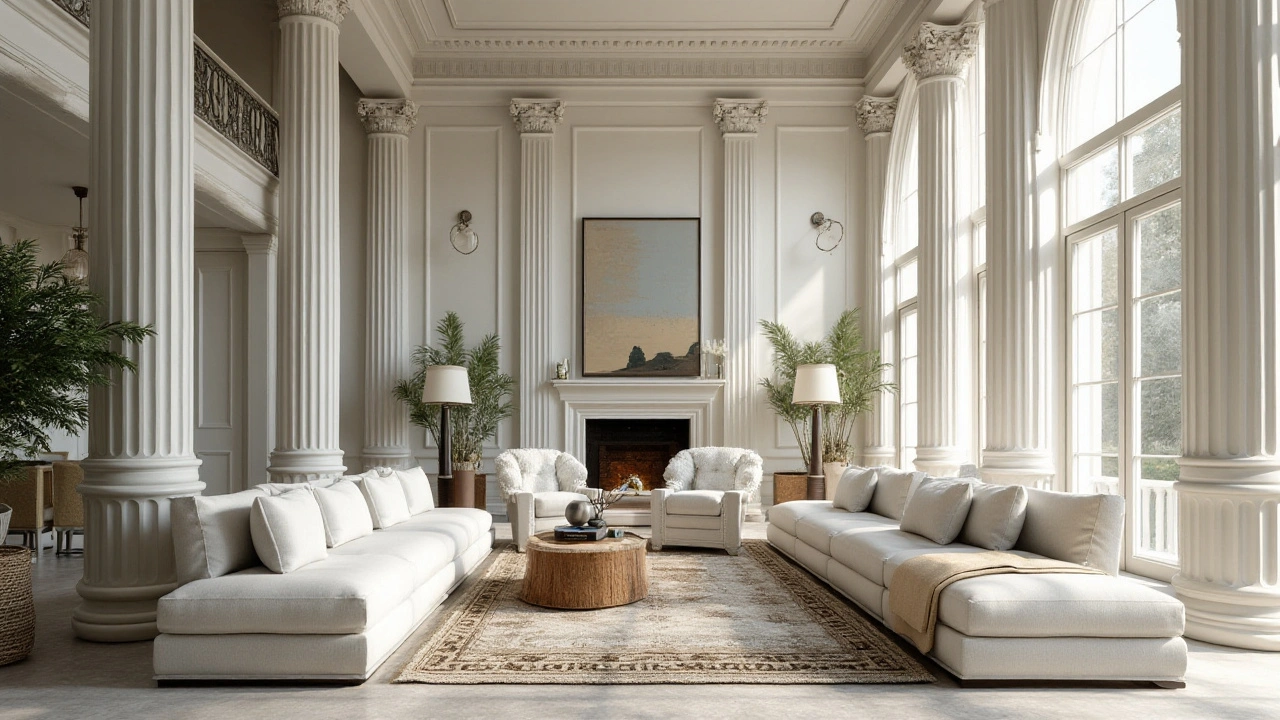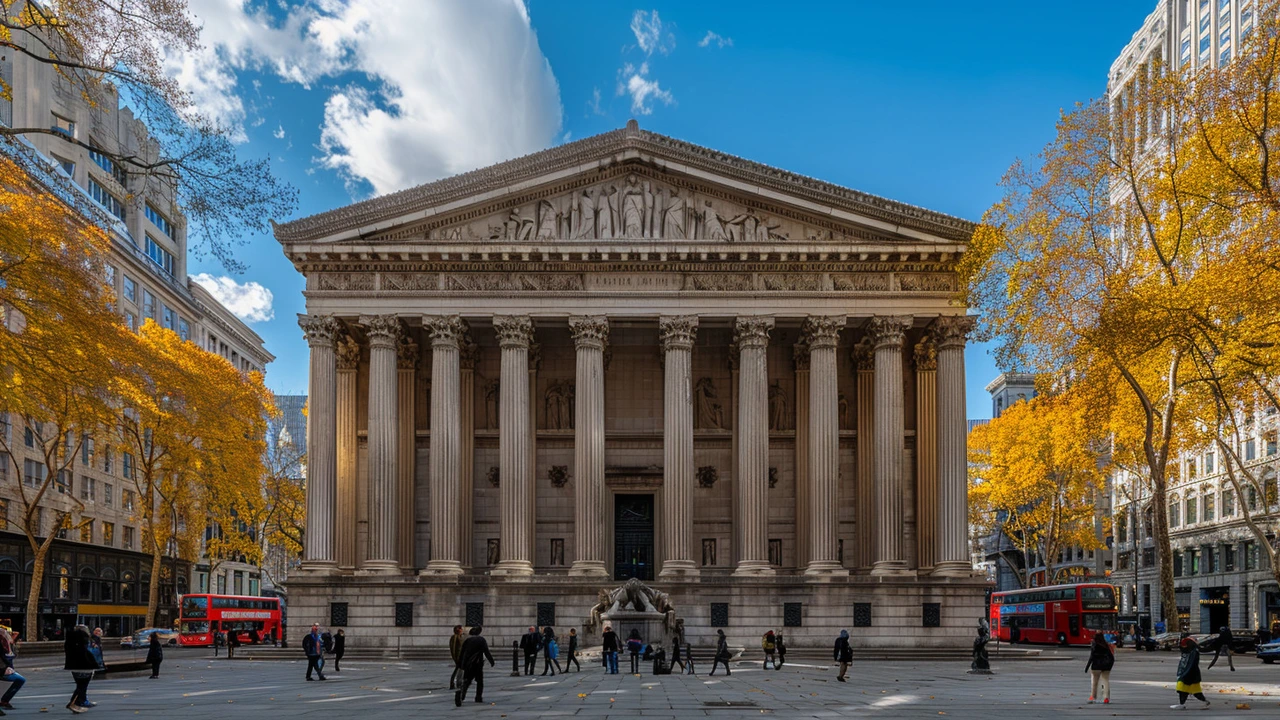Greek Revival Architecture: How to Spot and Use It Today
Greek Revival turned banks, courthouses, and farmhouses into mini temples — and that was on purpose. Built mostly in the early 1800s, the style borrowed directly from ancient Greek forms to signal order, stability, and civic pride.
The movement started after architects studied Greek ruins and pattern books. It spread fast across the United States and Europe because the look was bold, easy to copy, and fit new public buildings and private homes.
Key features to spot
Columns are the clearest clue. Look for Doric or Ionic columns at the front, often supporting a wide porch or portico. A triangular pediment above the entrance mimics a Greek temple and is usually plain rather than carved.
Check the roofline and cornice. Greek Revival favors a strong horizontal entablature and a pronounced cornice with simple moldings. Facades are generally symmetrical, with evenly spaced windows and a centered door.
Doors and windows follow simple rules. Entrances often include sidelights and a rectangular transom. Windows are tall and narrow, usually arranged in balanced pairs or rows. Pilasters — flat, column-like elements — frame corners and doors when full columns aren't used.
Materials and finishes matter. Many Greek Revival buildings are painted white to recall marble, but wood, brick, and stone are common. Trim is bold and plain, not delicate. Even small houses use heavy-looking trim to get the effect.
How to add Greek Revival style to your home
You don't need a full temple front to get the look. Start with paint: white or soft off-white makes a big difference. Add wide trim under the roof and a simple cornice to create the strong horizontal line that defines the style.
If your budget allows, add a small porch with square or round columns. Square columns or paneled pilasters are a cheaper, low-maintenance alternative that still reads as Greek Revival. Frame your front door with sidelights and a transom, and add a shallow pediment above it.
Balance is crucial. Keep windows and shutters symmetrical. Avoid overly ornate brackets or excessive decoration. The Greek Revival charm comes from clear, bold shapes, not fussy details.
For modern homes, use the style sparingly. A columned entry, a white facade, and strong cornice lines update a house without forcing a full historic makeover. Use durable materials like fiber cement trim to mimic heavy wood with less upkeep.
To study real examples, visit historic districts in New England, Southern towns like Savannah, or civic buildings in Philadelphia. If you plan a restoration, check local preservation guidelines and match original proportions and materials when possible. Small, well-chosen changes will give your home a timeless, temple-like presence.
Think about scale before you build. Large columns need deep foundations and proper proportions; a tiny, over-large column looks awkward. Talk to a designer who knows classical rules or check historic pattern books online to match proportions. When restoring, keep original trim profiles if you can; replacements should follow original shapes. Small changes like paint, sidelights, and a pediment cost little but deliver impact. Want inspiration? Browse the Greek Revival tag on Macklowe Art & Architecture for photos and renovation tips.

Greek Revival Architecture: Timeless Style and Lasting Influence
Greek Revival architecture has stood the test of time, showing up everywhere from grand public buildings to charming homes across America and beyond. This article explores why this style caught on, what makes it stand out, and how it still influences design today. Expect relatable tips for spotting Greek Revival features, a peek into its history, and practical advice for anyone drawn to its classic look. Whether you're a history buff, home renovator, or just love beautiful buildings, you'll walk away understanding why Greek Revival's appeal never seems to fade.
Read more
Reviving Greek Revival: Modern Takes on Timeless Architecture
Greek Revival architecture has made a remarkable comeback in contemporary design, blending timeless elegance with modern innovation. This resurgence pays homage to classic elements such as grand columns, symmetrical proportions, and historical motifs while integrating sustainable materials and smart technology. Cutting-edge architects are redefining this aesthetic to resonate with today’s lifestyle needs, creating harmonious living spaces that honor tradition yet embrace modernity. The revitalization of Greek Revival styles in urban and residential settings reaffirms its perennial charm and versatile adaptation. Offering practical tips, this piece explores how to incorporate these majestic designs into modern living.
Read more
Greek Revival Architecture: Exploring a Timeless Legacy
Greek Revival architecture reflects a timeless legacy of classical design, rooted in ancient Greek elements. This article explores its origins, key features, significant examples, and tips for integrating Greek Revival elements into modern homes. Dive into the history and enduring charm that makes this architectural style a favorite among design enthusiasts.
Read more
Discovering the Wonders of Greek Revival Architecture
Greek Revival architecture, inspired by ancient Greek temples, has left a significant mark on the world of design. This article delves into its origins, key characteristics, popular examples, and its lasting influence. Readers will gain insight into this timeless style and tips for identifying Greek Revival structures.
Read more
Exploring the Global Influence of Greek Revival Architecture
Greek Revival architecture has left a significant mark on the world, influencing building designs from the early 19th century to the modern day. This article delves into its origins, key characteristics, global spread, notable structures, and enduring legacy. Its timeless appeal and the way it has shaped modern architectural practices are explored in detail.
Read more